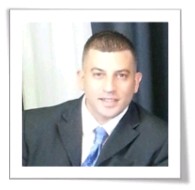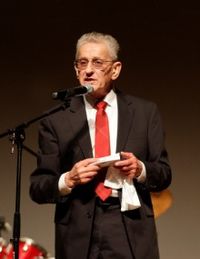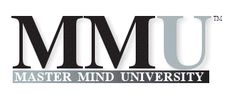Article Content from the Field of Master Mind Engineering (MMENG)
From the desk of: Joseph Mercado
To: Entrepreneur
Re: Landing Man On the Moon
Date: Wednesday, September 26, 2018 at 2:54 a.m. ⏰

Dear Entrepreneur,
Have you ever wondered who was truly behind the landing on the moon?
Neil Armstrong, Commander of Apollo 11, the spaceship that landed on the moon, made history when, while first setting foot on the “remote land” in 1969, he said…
“A small step for man, but a giant leap for mankind.”
Man showed he could leave earth and move somewhere else; that he could travel to space, that technology had radically changed within the range of a few years. But till the moment all the above has been made public, only a few people had an idea of how close to this “Giant Leap” for America was.
But there was someone who was quite aware of the matter, even more aware than the astronauts themselves. He was the Albanian – American engineer, Wilson Kokalari, the man responsible for programming the final test of the whole Apollo system, prior to its set-off for this interplanetary adventure.
Forty-five years after he started to work for the most secret and huge technological program in the world, and 38 years after the historical trip to the Moon, Wilson Kokalari agreed to have an exclusive interview with the Illyria newspaper upon invitation of its editor, Vehbi Bajrami.
He paid a visit to the editorial office with his sister, Lumto, the wife of the well-known activist and doctor, Hamdi Oruci.
From the Son of a Real Estate Businessman to Becoming an Elite Engineer:
Wilson Kokalari was born in Gjirokastra, and comes from the well-known family, the Kokalari’s, the most outstanding member of which is Musine Kokalari, victim of the communist dictatorship.
When his family moved to the United States, Wilson was only one year and half of age. His father, Miko Kokalari, was a clever businessman. At the outset he started to sell olives and cheese brought in from Albania. This effort not to break ties completely with Albania, almost cost him dearly; who, in 1939 returned to the U.S. only a few days before the Italian invasion took place.
After breaking ties, he focused on the real estate business. 50 years ago he already had his ownership of a number of buildings in Manhattan, which is worth a fortune today. The family would have been very rich. His sons had other plans.
Instead of becoming the Albanian Donal Trump, Wilson Kokalari and his brother, had taken up engineering. Wilson attended “Purdue University,” the best for those who want to become astronauts. Even Neil Armstrong, the commander of Apollo 11, graduated from this University.
Reaching the Moon During the Cold War Era:
The Apollo program began since the times of President Eisenhower was in power, but never developed for lack of funds. In April 1961, the Russians sent the first man to space, the astronaut Yuri Gagarin. In the framework of the Cold War, the propaganda impact of such an event was enormous.
A month later, President Kennedy, in his speech to the Congress, promised that “before the current decade reaches to an end, man will go to the Moon and come back to earth safe and sound.”
In the following years, NASA would employ 400 thousand people and would spend 24 million dollars on the project. Thousands of companies bid to become the main contractors of NASA.
Two private companies took over the contract for building the main parts of the spaceship that would make the trip to the moon.
“North American Aviation” from California would build the Command Service Module – CSM) of Apollo, while “Grumman Aircraft Engineering Corporation” from Long Island, New York, took over the setting up of the Lunar Module or Lunar Excursion Module – LEM)
An Albanian Engineer Leads the Program of Apollo Testing:
Wilson Kokalari is one of the few to have worked for both companies. The project was huge and it could not be managed by only two organizations. At least four more companies were contracted by NASA, to build the sub-systems of the space ship.
The engineer from Gjirokastra had a key role in the program. He was the main final tester of it all. After being completed, the sub-systems had to be tested on how they worked. If so, the whole system would undergo testing; then the system would be electronically on how it would function in space. In order to get the license to leave ground you would need astronauts inside the spaceship.
The testing program are thousands of pages long. They were drafted by the Albanian Engineer during two years of continuous, hard work.
To satisfy our curiosity, Wilson Kokalari brought to the editorial office a copy of one of his books containing steps of the testing. This guide book, titled Apollo, has his name on the front page, and was considered one of the biggest secrets by the time it was written. Although he was the author, and he was a considerably trusted person, Wilson was not allowed to take the book out of the workplace.
It is quite possible the reader knows about Apollo 11 that took man to the moon for the first time, or he is aware of Apollo 13, on which a movie was made with Tom Hanks as the leading role actor. The public is less aware of the test or uncompleted flights in space, as well as of the following trips to the moon.
For instance, from the 21st of December in 1968, and the 18th of May in 1969, three missions (Apollo 8, 9, and 10) left for space. There was hope to speed things up, fearing that the Russians would make it there first.
Each of the missions had three persons, but not one of them could land on the moon. Six times the Americans reached the moon, (Apollo 11, 12, 14-17), and a large team has the merit of it, but only a few people have been in the heart of everything, such as our hero, Wilson Kokalari.
A Plaque on the Moon:
As a token of their gratitude for the extraordinary work carried out by Wilson and the whole technical team, the astronauts created a plaque, with the names and signatures of the team members to the moon and left it there. Out of approximately 6.4 billion people in the world, Wilson is one of the 15 people to have his name on the plaque.
Only those of the core team, which put together and carried out the final testing of the spaceship. Then the names of the rest of them team were added. This fact is mentioned in the book “Albanians of America” written by Vehbi Bajrami. He interviewed also the Albanian-American astronaut, William Gregory in person, and made him known to Albanian readers all over the world.
While he was writing his book, Vehbiu could not trace Wilson, who, he was certain, deserved to be included with the information. The distinguished engineer, now retired, was asked about astronaut Allen Sheppard, who was considered by the Albanian press to be Albanian, may not have been an Albanian.
Wilson Kokalari, who had known ll of the astronauts during those famous years, laughed and joked: “According to my cousin, Tajar in Gjirokastra, even Abraham Lincoln was Albanian.” Wilson had known Sheppard during his long years of work in one of the key sections of NASA, but was not in direct contact with him.
The 8th Wonder of the World:
In a world starting to get used to air transport, a trip to the Cosmos was a real fantasy. Mankind was taking huge steps forward, and most of the people could hardly realize, or fathom it.
As I first started working with the Apollo program during the 1960’s, at the outset of the project, when I told my father I would go to the moon, he used to look at me as if I was crazy. Of course, he said… “You will go.”
Unfortunately, Wilson’s father Miko had passed away in 1964, and was not there to hear of the great event where his son was playing a key major role.
“Of course, by that time, people had no idea how close we were to getting to the moon,” says Wilson. The race with Russia was getting faster by the minute. It became essential when Russians launched their first satellite to the space, known Sputnik.
President Kennedy promised that within a period of time of ten years, the first man will be sent to the moon and back to the earth. This promise became reality even earlier, but President Kennedy was not there anymore to witness the great achievement.
Today, almost 40 years after the event, this gigantic step of humanity is still considered a miracle. Wilson, who is now retired, reminds those impressive days when he worked for the huge spaceship which would leave earth quite soon. He has been there for all versions of Apollo and has kept some of the books. For the most part they are too technical for the average person.
Aside from the certificates in appreciation of the work performed by the committed professionals, there are some papers witnessing the time invested for an enormous work carried out during those years.
On the other hand, if one thinks of the fact that he was a close witness of one of the most important events in the history of mankind, one is happy.
It is as if one was involved in setting up pyramids in Egypt, or in establishing the itinerary of the Great Wall of China. He, who had an opportunity to play such a key role in life, is naturally proud when he looks back. In spite of the dilemmas on the direction to take and which way to go, his decisions lead him the way.
Illyria is proud and happy to have written about so many outstanding persons within our country. It is seldom an Albanian has been close to one of the greatest events made throughout mankind, and played a key role in it.
“Very often” he says, “I became aware of the fact that this enormous object beside me, within a few hours would leave for space and to the moon. It is a unique experience, and it cannot be compared to anything else.
Wilson wrote the final engineering acceptance text also for Apollo 12 and Apollo 13. The launch of the mission Apollo 11 is what lead to the first man on the moon. This last one is probably known better to those who have seen the Hollywood movie with the same title. Wilson was one of the main people who helped to land a man on the moon.
To Your Engineering Success,
Joseph Mercado
P.S. Wilson was and still is my mentor. He taught me a lot about developing life skills. I miss you Uncle Sonny!
![]()
Have a question about this article?
Please send us an email message below and we will answer you promptly.




